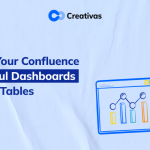
Confluence for HR teams: Improve your onboarding with Confluence automation, templates, and Smart Courses
Onboarding helps new employees adapt to their new work environment, integrate with the team, and become effective contributors. Just like every person is unique, not every onboarding process should look the same. Therefore, the human resources (HR) team must ensure that every new team member receives adequate training within the defined time.
However, it’s not as simple as it sounds, and appropriate onboarding can be challenging sometimes. These are some of the common challenges faced by the HR team:
- Generic onboarding not contextual to specific roles
- Unstructured onboarding process
- Poor Communication during the onboarding phase
- Lack of employee feedback post-onboarding
But don’t worry HR people, we’ve got your back.
The great news is that there are tools that simplify the process, and Confluence is one of the finest. Many teams already rely on Confluence for knowledge management and collaboration within their organization, so gathering all the necessary information and onboarding documents there is very helpful.
In this blog post, we will uncover Confluence’s top features, such as Confluence automation and template, that provide smooth, successful, and on-the-go onboarding for every team.
Confluence templates for HR pros
Confluence offers pre-defined templates that you can add to your page to guide your writing and planning as you prepare any necessary documents. It already provides templates for HR purposes and much more to serve all teams. Here is a little secret: I also used a Confluence template while writing this  .
.
If you’d like to have your own touch or follow your organization’s guidelines, you can create a template from scratch and use it whenever needed, as long as you have the right access to the space.
Confluence automation for a better onboarding process
Confluence templates are great, but one of the most exciting features of Confluence is automation. The Confluence team has been scaling up the automation feature, and the possibilities are endless. It offers different ways to automate repetitive tasks and make your work more efficient, ensuring you never miss any tiny detail.
Components of Confluence automation rule
Automation might sound like a fancy coding word. But Confluence automation doesn’t really require coding knowledge, meaning anyone can build it. Here is what you simply need to remember: triggers, conditions, and actions. A trigger starts a rule, a condition is an option that limits the rule, and an action is what the rule does.

Creating Confluence automation rule from a template
Onboarding doesn’t start the day a new employee starts; it’s rather one of the last steps of a long process. So, let’s say the marketing team has an open position you need to fill. For this, you need to collaborate with the head of marketing throughout the whole process, from defining the job description to finalizing the offer for the chosen candidate and deciding on the needed training material for this new team member. It’s a lot of going back and forth between you two. Since you probably have other ongoing recruitments, you’ll need to track the marketing updates easily.
You can automatically assign a certain label to a page when a specific author publishes it. In our example, you can assign a “marketing” label to each page published by the head of marketing.

Creating your own Confluence automation rule
Let’s focus next on how Confluence automation can save you time and ensure smooth onboarding. After closing the deal with the chosen candidate, you start preparing the onboarding plan by creating a new page on your Confluence space, and you can use, for example, the 90-day plan template Confluence offers.
Of course, you already know what details to include when introducing the company, its culture, and the team. Still, you also need to collaborate with the head of marketing to set the specific details and milestones related to the role. This is why it would help if you had them notified every time the page is edited as you both collaborate on building this onboarding plan. For this, you can set up an automation rule that sends them an email or a Slack message whenever the page is updated. Here is how Confluence automation works:

- Trigger: Page edited
- Condition: Page labels must be “onboarding” & “marketing”
- Action: Notify the head of marketing via email
Check these links to learn about Confluence automation
- Get started with Confluence automation
- Discover recent automation features for Confluence to boost your productivity
- Leverage user groups in Confluence automation for easy user management and onboarding
Integrating a Learning Management System (LMS) into Confluence
As mentioned, Confluence is great for knowledge sharing, but integrating an LMS within this tool allows team members to access training courses or e-learning content within the same system, making it even better. And because we also love a smart tool that helps you easily cross an extra task off your daily list, our Smart Courses for Confluence helps you monitor the team’s learning progress. It already includes automation options that help you keep everything and everyone on track.
Ongoing training with DONOS Academy using Smart Courses for Confluence LMS
Read More
HR tasks include always monitoring new team members, planning their onboarding, and ensuring everyone receives the necessary training within the defined time, which can all be quite a hassle. Manually assigning the specific onboarding material to each member is easy for small teams. But when your team grows bigger, you’ll need extra help. With the continuous assignment feature on Smart Courses for Confluence, every new joiner automatically gets all the necessary courses or introduction materials assigned to them when added to the Confluence group.

Plus, you can pre-define due dates for each course and set reminder rules to ensure the onboarding process is completed within the time limit.
Feedback and Comments help to reinforce strengths and identify flaws
A good onboarding experience shows employees that their new workplace will be supportive and encourage their professional development. One way to showcase that is by allowing them to provide feedback and share their thoughts and comments on the courses without needing to leave the app. Smart Courses for Confluence allows course attendees to comment on the learning material itself and engage with other people by adding their thoughts either on the course dashboard or directly from the course catalog.
The team’s feedback is essential for enhancing the quality of the onboarding material. That’s why we also included a feedback option in Smart Courses: course attendees can evaluate the learning material, and course contributors can work on solving any concerns the team raises.
Read more about creating advanced learning material using Smart Courses for Confluence. If you still have any questions regarding Smart Courses for Confluence, book a demo and let us get to know you and answer your questions.


